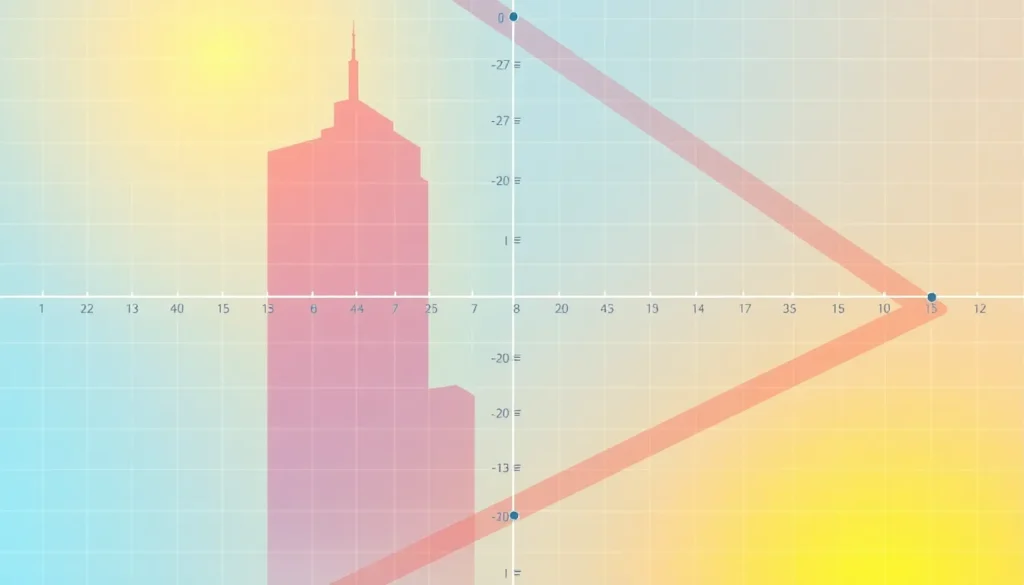Table of Contents
ToggleIn the world of mathematics, the concept of parallelism plays a crucial role in understanding shapes, lines, and their relationships. When two lines are described as parallel, it means they run side by side and never intersect, no matter how far they extend. This fundamental idea forms the basis for various mathematical principles and theorems, making it essential for students and enthusiasts alike.
Parallel lines aren’t just a concept confined to geometry; they appear in various mathematical contexts, from algebra to calculus. Grasping what parallel means in math opens the door to deeper insights into spatial reasoning and problem-solving. Whether in the classroom or real-life applications, recognizing parallelism can enhance one’s understanding of the mathematical landscape.
Understanding Parallel Lines
Parallel lines in mathematics maintain a constant distance apart and do not intersect, regardless of their extension. This property makes them integral to many mathematical concepts.
Definition of Parallel
In mathematics, parallel lines refer to two distinct lines in a plane that never meet. These lines have the same slope when represented in a coordinate system. For example, in a Cartesian plane, the equations of parallel lines might appear as y = 2x + 3 and y = 2x – 5, demonstrating identical slopes of 2.
Characteristics of Parallel Lines
Parallel lines possess key characteristics that define their nature:
- Constant Distance: Parallel lines maintain equal separation along their entire length.
- Same Slope: Both lines share identical slope values in a coordinate system, indicating they ascend or descend at the same rate.
- Equidistant Points: Any perpendicular segment connecting two parallel lines remains constant in length, irrespective of the segment’s position.
- No Intersection: By definition, parallel lines will never overlap or cross each other, regardless of how far they are extended.
Understanding these characteristics provides a solid foundation for exploring their applications across various mathematical disciplines.
The Concept of Parallelism in Geometry
Parallelism is a fundamental concept in geometry, applicable in both two-dimensional and three-dimensional spaces. Understanding how parallel lines behave in different dimensions enhances comprehension of geometric principles.
Parallel Lines in Two-Dimensional Space
In two-dimensional space, parallel lines share consistent characteristics. They do not meet, maintaining equal distances apart regardless of extension. Represented graphically on a Cartesian plane, these lines can be articulated with equations exhibiting the same slope. For example, the equations y = 3x + 2 and y = 3x – 4 represent parallel lines due to their identical slopes of 3. Additional attributes of parallel lines in two dimensions include:
- Constant distance: Parallel lines always remain equidistant from each other.
- Same slope: The angle of inclination remains uniform, indicating that they rise and run at equivalent rates.
- Equidistance principles: Any perpendicular line drawn between two parallel lines maintains an equal length at all points.
These characteristics lay the groundwork for various geometric proofs and theorems involving parallel lines.
Parallel Lines in Three-Dimensional Space
In three-dimensional space, parallel lines maintain similar properties but require deeper exploration due to additional complexities. They are defined as two lines that, while possibly existing in different planes, never intersect. Examples of parallel lines in this context can be found in structures like skyscrapers, where the vertical lines of the buildings run parallel without convergence. Key aspects of three-dimensional parallel lines include:
- Lack of intersection: Parallel lines do not meet regardless of how far they are extended in space.
- Spatial orientation: Unlike two-dimensional lines, lines can be parallel even if situated in distinct planes, as seen in skew lines that do not interact.
- Distance consistency: Similar to two-dimensional space, the distance between parallel lines remains constant throughout any measurable extent.
Understanding parallel lines in three dimensions is crucial for fields like architecture, engineering, and physics, which frequently involve multi-dimensional analysis and positioning.
Real-World Applications of Parallel Lines
Parallel lines play a critical role in various fields, including architecture, engineering, and design. Their unique properties enhance functionality and aesthetics in real-world applications.
Architecture and Design
In architecture and design, parallel lines ensure structural stability and visual harmony. Architects use parallel lines to create blueprints that represent building layouts accurately. For example, the lines of walls and windows often remain parallel to maintain alignment and balance in a structure. Additionally, urban planners design streets with parallel lines to optimize traffic flow and enhance navigability. As a result, buildings and public spaces benefit from the principles of parallelism, facilitating effective space utilization and coherent designs.
Engineering and Construction
In engineering and construction, parallel lines are fundamental for ensuring precision and integrity in projects. Engineers utilize parallel lines in schematics to depict mechanical components that function together. For instance, parallel girders in bridges provide equal weight distribution, enhancing safety. During the construction process, surveyors employ parallel lines to establish boundary lines and site grading, ensuring structures sit level and secure. Proper application of parallelism across these domains contributes significantly to the successful execution of engineering projects.
Common Misconceptions About Parallel Lines
Misunderstandings about parallel lines often arise in mathematics. Clarifying these misconceptions enhances comprehension of the concept.
Overlapping vs. Parallel
Overlapping lines intersect at one or more points, while parallel lines maintain a constant distance and never meet. Individuals sometimes confuse the two, believing that lines that appear close together but intersect at some angle can be parallel. For example, the lines described by the equations y = x + 2 and y = -x + 2 are not parallel; they cross at a point. Recognizing the consistent distance between parallel lines is crucial for accurate geometrical interpretations.
Infinite Lines and Parallelism
The concept of parallelism extends infinitely. Two parallel lines continue indefinitely in both directions while maintaining equal distance apart. This characteristic is significant in understanding geometric proofs and the relationships between various shapes. For instance, in a two-dimensional plane, parallel lines can function as boundaries for shapes without restriction. Clarifying that parallel lines can exist in infinite contexts, such as in three-dimensional spaces, helps illustrate their importance in geometric principles and real-world applications like design and architecture.
Understanding parallelism is vital in mathematics and its applications. The concept of parallel lines, with their unique properties, serves as a cornerstone for various mathematical fields. Whether in geometry, algebra, or real-world scenarios like architecture and engineering, recognizing the significance of parallel lines enhances both theoretical knowledge and practical skills.
By grasping the characteristics of parallel lines, individuals can improve their spatial reasoning and problem-solving abilities. This foundational concept not only aids in academic pursuits but also plays a crucial role in everyday applications, making it an essential topic for anyone looking to deepen their understanding of mathematics.




